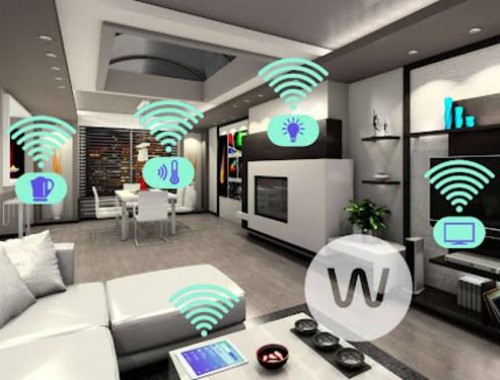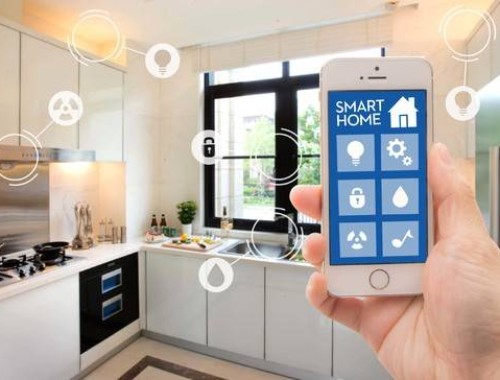When will the smart home boom come
Source:Sina Home
The development of Smart Home from 1984 to today has failed to usher in a real outbreak. The problems that need to be solved are still old problems such as market fragmentation and product futility.
From 1984 to today, smart home has not been able to usher in a real outbreak. Instead, it has encountered setbacks. The reason is the specificity of the home industry and the allergic reaction combined with the Internet. The problems that need to be solved are still old problems such as market fragmentation and product futility.
While waiting for the overall breakthrough of the industry, what should smart home companies do?
Since the concept of smart home was proposed in 1984, the development of smart home has been restricted by technology for more than 30 years. But nowdays, whether it is the Internet of Things technology, or artificial intelligence, or cloud computing, all have been relatively mature. What is really needed is the manufacturer's deep understanding of the smart home ecology.
Twenty years ago, it was mainly technical issues that restricted the realization of smart home functions. There are three directions here, namely the Internet of Things, artificial intelligence, and cloud computing.
The three directions are actually ready for the outbreak of smart homes. At the public cloud level, the technical strength of companies such as Alibaba, Tencent, and Huawei is not weak, and it can be said that they have kept up with the international development trend; the perception field that supports artificial intelligence, iFLYTEK for voice recognition, SenseTime for visual recognition, etc, which has also laid the foundation.
Many categories in the home industry
Not only are the areas where smart homes such as sweeping robots, air conditioners, locks, and lights that have been popular in recent years have relatively obvious perceptions, but also the integration of traditional objects such as traditional beds, sofas, cabinets, or ecological integration, which needs manufacturers more creative.
If the intelligence of the product is just to connect it to the network, then just use new tools to make old content. When an enterprise attempts to connect the product to the network, it must be clear about what it can bring, not just add an app to the user's mobile phone.
The fragemented scene of the home industry
In traditional thinking, security, sleep, entertainment and other scenes are extremely fragmented between their functions and needs, which also leads to the dispersion of manufacturers in the home furnishing industry.
In the era of smart home, air conditioners do not necessarily understand locks, and locks do not understand lights. In this case, it is even more difficult to complete ecological collaboration with each other.
The relative long transaction chain of the home industry
The chain becomes complicated as it grows, and as it becomes complicated, everyone feels that they have a chance. Whether it is a manufacturer, a distributor, or a third-party service provider, everyone feels that they are in a favorable position, which leads to the final question of who should be compatible.
Smart homes may be more than two systems. Various manufacturers may even have the same protocol and code, but they cannot communicate, resulting in extremely fragmented user experience.
All problems are old problems.
In fact, this is the problem that has always existed in the home market. It is fragmented and ecologically weak, which has previously led to no large domestic home furnishing companies occupying the market, and also caused the industry's digitalization to be slower than other industries.
How can this trend become a boom?
Products need to return to real convenience and enterprises need use new tools to make new content. At the same time, equipment companies need to change their thinking.
A large number of similar pseudo-demands need to be completely eliminated, and product competition must return to its essence - after all-to provide a more convenient life, such as waking up at night to turn on the lights automatically, the interconnection of TV and doorbell functions.
Although the slogan of selling services and selling content is the consensus of the industry, most companies still rely on hardware equipment to make their main profits. If the hardware, content, and service can be organically combined, the long-term value it can produce is visible to the naked eye.
There are many things that can do this kind of extension of the boundaries of household products. For example, it is possible to connect the storage of consumable items and shopping platforms, such as turning more furniture products into content carrying platforms, etc.
The smart home market may be much larger than today's home furnishing market. No company can truly meet the needs of all consumers. Become an infrastructure, it is by no means closed, but open as much as possible, compatible as much as possible. Only if the smart home can solve enough problems, the market will really break out.
-

Midea released the first smart home operating system based on HarmonyOS
-

The second quarter analysis of the European smart home market is released, Amazon tops the list
-

Huisen Furniture joins hands with Xiaomi, entering the Smart Field of the Whole House
-

The demand for home security is as high as 92%, with huge growth potential

 沪公网安备31010402003309号
沪公网安备31010402003309号



